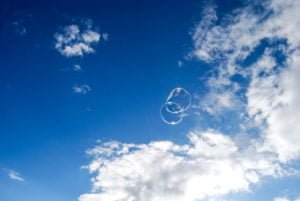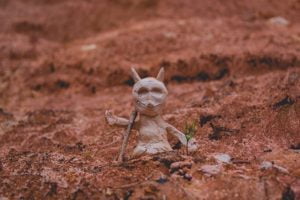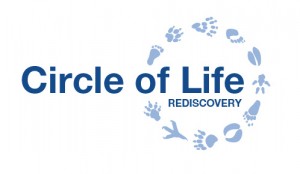Neuroscience: Mental meandering and the Outdoors – System 1 and System 2
By Kate Macairt (Director CLR)
I am inside a box sitting by a window and the window is slightly open. Outside my window perched on a telephone line are 2 swallows; whatever it is they are communicating to one another, it is clearly something of great interest to them. Their chattering is a non-stop percussive melody, a complex composition with background hum of some power tool and a van pulling up below the window; I smell diesel. A gentle summer breeze licks my face and I watch how the verdant leaves tremble. My mind relaxes. My hand is holding a pen and might start doodling. I have escaped the box.
If this description resonates then no doubt you too were accused of daydreaming in class. I taught teenagers Expressive Arts for many years and that sense of absorption in the moment; a relaxed pleasure in simple things was a gift I felt was an important aspect of Arts education.
I have continued to explore and discover more about the human trait of Creativity and the relationship between creative release and emotional literacy. Ten years ago, I became a Play Therapist.
Day dreaming is important, and it seems easy to daydream outdoors in a place with a tree or flowers, grass, water, sand, mud.
“When we need to plan for an uncertain future, mental meandering can be the perfect tool. Daydreaming has also been shown to be crucial in boosting creativity and problem solving, by allowing the brain to forge connections between pieces of information we don’t link up when we are too focused”, Caroline Williams New Scientist 20/5/17.
System 1 and 2
I am no Neuroscientist but I am a Creative Therapist and the dual process concept resonates as a workable idea which has helped me understand my own thinking and feeling. Recent neuroscience has explored the concept of dual processing (see Kahneman, Kauffman,) – System 1 and System 2.
This theory helps us to understand where feelings come from and why feelings can sometimes manifest for what seems no logical reason – a sudden mood change. I have found that drawing a diagram (psycho-ed) to show how feelings connect to sensory memories has helped young people understand why they are struggling with the world and their sense of place within it.
My version of the science is a simplified, focusing on those aspects of the research which I think are relevant to feeling. System 1: the larger automatic intuitive super- fast automatic brain absorbs all information from the sensory experience of an event. What we hear, see, taste, smell, touch is transmitted into our system 1 at micro second speed and it can feel rather chaotic, especially if we find ourselves in a noisy, busy, hot/cold, place and are hungry (fast brain processing). We may suffer sensory overload. Observe a young infant in a large supermarket and you will probably see the effect of sensory overload it is certainly a location where the toddler tantrum seems to occur frequently.
I think of the System 2 mind as a Superintendent. It is this small frontal cortex area of the brain which tries to filter and make sense of all the sensory input – it needs to make logical rational sense of the experiences so that we feel safe. Superintendent has been identified as lazy and prefers to deal with subjects it has experienced before. System 2 does not like change and so when the flood of sensory information is being fired the Superintendent naturally connects with information it has already stored as memory or tries to find the best fit. System 2 superintendent gives things names – it helps with storing and retrieval of information. So sensory feelings become emotions.
The first time I heard strange chattering out of my window I could not name it. I did not know a swallow. Now I quickly recognise that sound. I am not sure what the power tool is exactly, but I am reassured by stored information from past encounters with power tool noise. Superintendent focused thinking helps me feel in control and safe.
 Now consider the infant of 4 months. The baby needs to reduce fear and feel safe but everything is new and the memory bank is practically empty. The infant needs an adult to ensure safety and meet basic animal needs such as feeding, shelter. The infant needs to feel safe with Other and safe in her environment.
Now consider the infant of 4 months. The baby needs to reduce fear and feel safe but everything is new and the memory bank is practically empty. The infant needs an adult to ensure safety and meet basic animal needs such as feeding, shelter. The infant needs to feel safe with Other and safe in her environment.
The baby’s system 1 needs to work hard in the first year of life. The ears, eyes, nose, mouth, skin need to learn what to do. It is through sensory experience that the infant begins to build a sense of them Selves in relation to Other and the environment.
System 2 needs experiences to be repeated, “again again” is Superintendent’s baby voice. Our brain needs repetition to help make sense of our Senses. The infant needs to build a firm foundation brain, a firm sensory network. Imagine two infants. Both are left alone for a few minutes. The first infant is in a bouncy chair in a living room. The room has electric lighting, a t.v is on and flashes colours in sporadic bursts into the room. The voices on the t.v are high and shrill full of excitement and energy, the baby wriggles in her chair and stretches out for the bright red toy in front of her. The air is heavy with the smell of cooking.
 Baby 2 has been put down on a rug on a piece of grass. The sky is blue and little clouds scud by. The sun is warm and the leaves on the tree twinkle, a butterfly lands on the rug next to the child. The air is full of sounds of the distant town, dogs barking, the wind in the bushes, and the sweet smell of freshly cut grass. The infant’s arms wave in the air.
Baby 2 has been put down on a rug on a piece of grass. The sky is blue and little clouds scud by. The sun is warm and the leaves on the tree twinkle, a butterfly lands on the rug next to the child. The air is full of sounds of the distant town, dogs barking, the wind in the bushes, and the sweet smell of freshly cut grass. The infant’s arms wave in the air.
Can you imagine both scenarios? I am not asking for judgement here as both scenarios are perfectly relevant. But it is the difference in sensory input that is worth focusing on. An infant brain requires enriched input, the infant brain knows what it needs. Carl Jung gave the world the concept of the Archetypes. In some ways the idea of these energy potentials held deep within the psyche seem to relate to the neuroscience concept of synapses waiting to be activated.
The Great Mother archetype is an internal drive which when activated will help the infant feel connected and safe. Secure attachment to the Mother or primary caregiver is boosted by secure attachment to The Great Mother: the earth. Only outdoors can the infant-child truly explore the world and what it is made of. Outdoor space provides room to stretch and try out body strength, to breathe air- although sadly it’s true that in our polluted cities aircon perhaps provides safer air. Man- made is good and we certainly wouldn’t want to get rid of our useful gadgets and inventions but again just consider the physical differences between a swimming pool and a lakeside or seaside beach? How does it feel to be beside the lake or sitting in the spectator stand?
If the infant is exposed to enriched natural sensory input she will unconsciously be creating a firm memory store which will become the foundation of all her future thinking. The early years are like compost making years which create a rich bed of experiences which feed and enrich all other experiences in the future. When we speak of Resilience I feel we are recognising this firm foundation in the child/adult’s mind. An ability to
bounce back is deep set. We need to keep feeding the compost throughout our life by ensuring diverse sensory experiences.
Landplay Training Course
Kate will be running her two day Landplay training in Essex on 25th & 26th May 2019. Please visit the Circle of Life Rediscovery website for further information and view full course information here.
Transforming education, health and family through nature.
Circle of Life Rediscovery provides exciting and highly beneficial nature-centred learning and therapeutic experiences for young people, adults, and families in Sussex woodlands, along with innovative continuing professional development for the health, well being and teaching professionals who are supporting them.
Recommended related reads
Berne Morris: 1989; Coming to our Senses
Brazier C: 2018; Ecotherapy in Practice
Jennings Sue: 2001; Embodiment-Projection-Roleplay
Kahneman D ;2011; Thinking Fast and Slow
Knight S: 2013; Forest School and Outdoor Learning in the Early Years
Louv Richard : Last child in the Woods
Oaklander V : 2007; Windows to our children,
Robb M et al : 2015; Learning with Nature
Young Jon: 2001: Exploring Natural Mystery: Kamana one
Author Kate Macairt
Copyright



